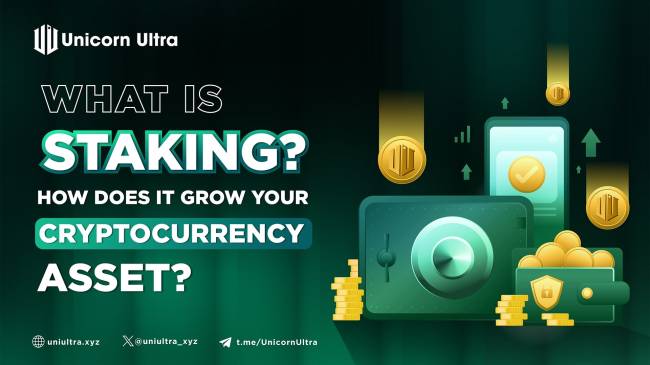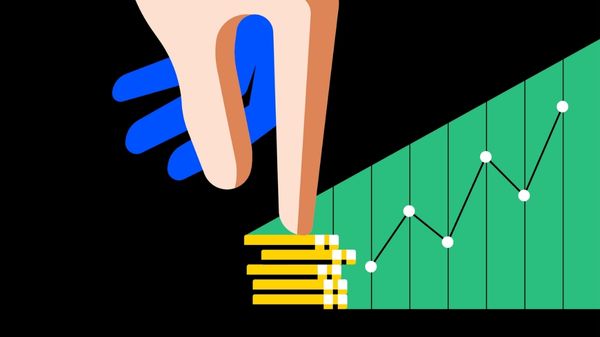Many people see the gloom of the cryptocurrency market as a good time to "hold" their assets while waiting for a signal of improvement. But there is another interesting solution that not only preserves assets but also has the potential to grow it. That solution is Staking. So, what is stacking?
Table of Contents
What is stacking in crypto?
What is stacking? The key to the staking concept can be wrapped just by one sentence: "Make cryptocurrencies profitable but continue to own them."
Staking is a form in which owner lock their crypto asset within a set period of time. What makes cryptocurrencies increasingly popular is that their value always has the potential to increase. Therefore, for some cryptocurrencies with optimistic values, owners can use them as idle capital to make a profit - which is usually as the staking rewards (depending on the blockchain the owner wants to stake).
In some respects, staking seems quite similar to the bank deposit model; however, there is a significant gap between these two models, emphasizing the complexity surrounding how staking works. For example, any recognized fiat currency can be deposited, but not all cryptocurrencies can be staked.

How Does Staking Work?
Technically, staking is using cryptocurrency as proof of stake that is cultivating a functioning ecosystem on the networks. In other words, only blockchains that use the Proof of Stake (PoS) algorithm allow users to participate in staking.
The validator of blockchains using PoS is developed to ensure that all transactions are verified and secured without a bank or payment processor in the middle. By amassing larger amounts of stake, delegations from multiple holders act as proof to the network that the validator’s consensus votes are trustworthy, and their votes are therefore weighted proportionally to the amount of stake the validator has attracted.
Thereby, once the owner makes staking, the cryptocurrency they stake will participate in the above process and help maintain the security of that network’s blockchain. In exchange for locking up your assets and participating in the network validation, validators receive rewards in that cryptocurrency known as staking rewards.
How To Make Money Staking Crypto?
With many veterans in the blockchain industry, staking offers an additional option besides "hodl." Instead of holding crypto for the long term, staking is a way of making their assets work for them by generating rewards. Much better than leaving them in your wallet and watching their value rise and fall erratically, right?

What Are The Benefits of Staking Crypto?
The main benefit of staking, as mentioned, is a source of passive income. Also, staking is a way to contribute to the security and efficiency of the blockchain projects you are enthused with. The asset value is supplemented by the staked cryptocurrency, now making the blockchain more resistant to attacks and strengthening its ability to process transactions.
What Are The Risks of Staking Crypto?
Period: The staking period must be adhered to, depending on the policy of where you stake. During this period, you wouldn’t be able to cash out or trade your tokens.
Loss potential: The value of cryptocurrencies always fluctuates strongly. If, during the staking period, the cryptocurrency you stake falls into a recession, not only will you not receive rewards, but you will also face the risk of loss.

Should You Stake Crypto?
Staking can be a complicated idea or a simple one, depending on how many levels of your understanding. If you are someone who doesn't mind price fluctuations but focuses on the long-term value, staking is worth it. However, you should approach cautiously and, at the same time, equip yourself with solid knowledge.
How to stake crypto?
Staking is open to everyone (but make sure to own the correct type of crypto that the staking platform allows).
Previously, staking had many annoying requirements that easily discouraged newbies. However, developments in the industry now allow easier staking via exchanges or even cryptocurrency wallets - such as Coinbase or MetaMask wallet.
Conclusion
Thus, this article has provided relatively complete necessary information about "What is staking." Hopefully, the information and content in the article can be useful to anyone who is learning about Staking.Follow u2u.xyz to update more interesting information and knowledge about blockchain.






